Every school possesses a unique story—decades or even centuries of achievements, milestones, transformative moments, and evolving traditions that define institutional identity. Yet many educational institutions struggle to present this rich history in ways that genuinely engage students, connect alumni, and inspire pride. Traditional timeline displays with printed dates and faded photographs fail to capture attention in an era when students expect interactive, multimedia experiences comparable to the technology they use daily.
Digital school history timelines represent a transformative approach to heritage preservation and presentation, converting static chronological displays into dynamic, interactive experiences that bring institutional history to life. These modern systems combine intuitive touchscreen technology with rich multimedia content, creating engaging narratives that help current students understand their place within continuing traditions while strengthening alumni connections through accessible, comprehensive historical recognition.
Why Digital School History Timelines Matter:
- Enhanced Engagement: Interactive exploration captures attention far more effectively than static displays
- Unlimited Capacity: Digital systems showcase complete institutional history without physical space constraints
- Multimedia Storytelling: Photos, videos, and audio recordings bring historical moments to life
- Easy Updates: Cloud-based management enables instant additions without costly physical reinstallation
- Remote Access: Web-based platforms allow alumni worldwide to explore school history
- Search Functionality: Students and visitors can quickly find specific years, people, or events
- Cost Efficiency: Digital timelines eliminate recurring costs of traditional printed updates
Whether you’re planning a comprehensive heritage preservation initiative, seeking to modernize outdated hallway displays, or exploring innovative ways to strengthen school pride, this guide provides everything you need to understand, implement, and maximize the value of digital school history timelines for your institution.
Understanding Digital School History Timelines
Before implementing specific technologies or approaches, understanding what digital school history timelines are and how they differ from traditional displays helps ensure your institution selects appropriate solutions serving your unique goals.
What Makes Digital Timelines Different
Traditional school history displays typically consist of printed posters, mounted photographs, or painted murals showing institutional chronology in linear formats along hallways or in dedicated heritage rooms. While these displays serve basic documentation purposes, they face inherent limitations that digital approaches overcome.
Traditional Timeline Limitations:
- Fixed content requiring complete replacement for updates
- Limited information capacity due to physical space constraints
- No interactive exploration or personalized discovery paths
- Static presentation lacking multimedia engagement
- Deterioration over time requiring expensive restoration
- Single location access limiting audience reach
- No analytics revealing which content engages viewers
Digital Timeline Advantages:
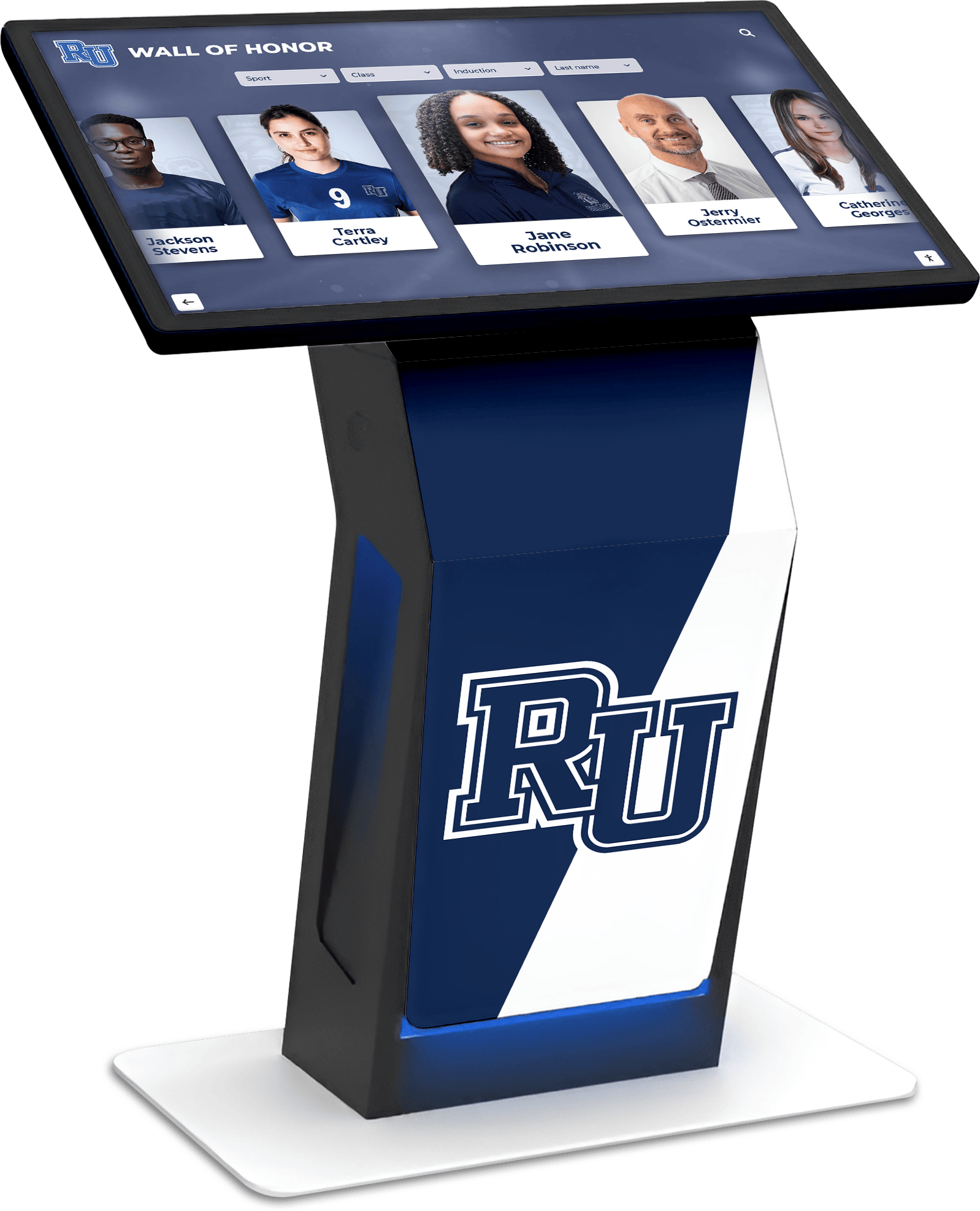
Digital school history timelines transform these limitations into opportunities through modern technology specifically designed for educational heritage preservation. Interactive touchscreen displays enable visitors to explore decades of history at their own pace, searching for specific years, browsing by category, or following thematic pathways through institutional evolution. Cloud-based content management systems allow authorized staff to add new milestones, correct information, or enhance existing entries remotely without requiring technical expertise or physical access to displays.
Solutions like Rocket Alumni Solutions provide purpose-built platforms specifically designed for educational institutions, combining unlimited historical capacity with intuitive interfaces that make complex timelines accessible and engaging for diverse audiences from elementary students to elderly alumni.
Core Components of Effective Digital Timeline Systems
Successful digital school history timeline implementations incorporate several essential elements working together to create comprehensive, engaging experiences:
Interactive Display Hardware: Commercial-grade touchscreen displays specifically rated for continuous operation in high-traffic institutional environments provide the physical interface through which users explore historical content. These displays range from 43-inch to 65-inch screens depending on installation location and viewing distance, with high-resolution capabilities ensuring photographs and videos appear crisp and professional. Responsive capacitive touch technology delivers smartphone-like interaction patterns requiring no instruction for intuitive navigation.
Content Management Software: Cloud-based platforms enable authorized staff members to organize historical content chronologically, upload multimedia assets including photos and videos, create detailed event descriptions and context, establish cross-references connecting related historical moments, and publish updates appearing instantly on displays. The most effective platforms require no coding or technical expertise, using familiar interfaces similar to social media or basic website administration.
Multimedia Historical Content: Rich, diverse content types bring history to life far more effectively than text and dates alone. Comprehensive digital timelines incorporate historical photographs documenting facilities, students, and events across eras; video footage from competitions, ceremonies, and significant occasions; scanned historical documents including newspaper clippings and archival materials; audio recordings of interviews, speeches, or performances; interactive maps showing campus evolution; and detailed biographical profiles of significant contributors to institutional development.
Search and Navigation Tools: Unlike linear printed timelines requiring viewers to scan entire displays seeking specific information, digital systems provide powerful discovery tools including chronological browsing jumping directly to specific years or decades, keyword search finding people, events, or topics instantly, category filtering exploring athletics, academics, or facilities separately, related content suggestions guiding discovery of connected historical moments, and bookmarking capabilities allowing users to save interesting content for later review.
Benefits of Digital School History Timelines
Educational institutions implementing digital timeline systems report significant benefits across multiple strategic objectives from student engagement to alumni relations to institutional marketing.
Enhanced Student Engagement and Pride
Current students represent the primary audience most timeline systems aim to serve, and digital approaches dramatically improve engagement compared to traditional static displays.
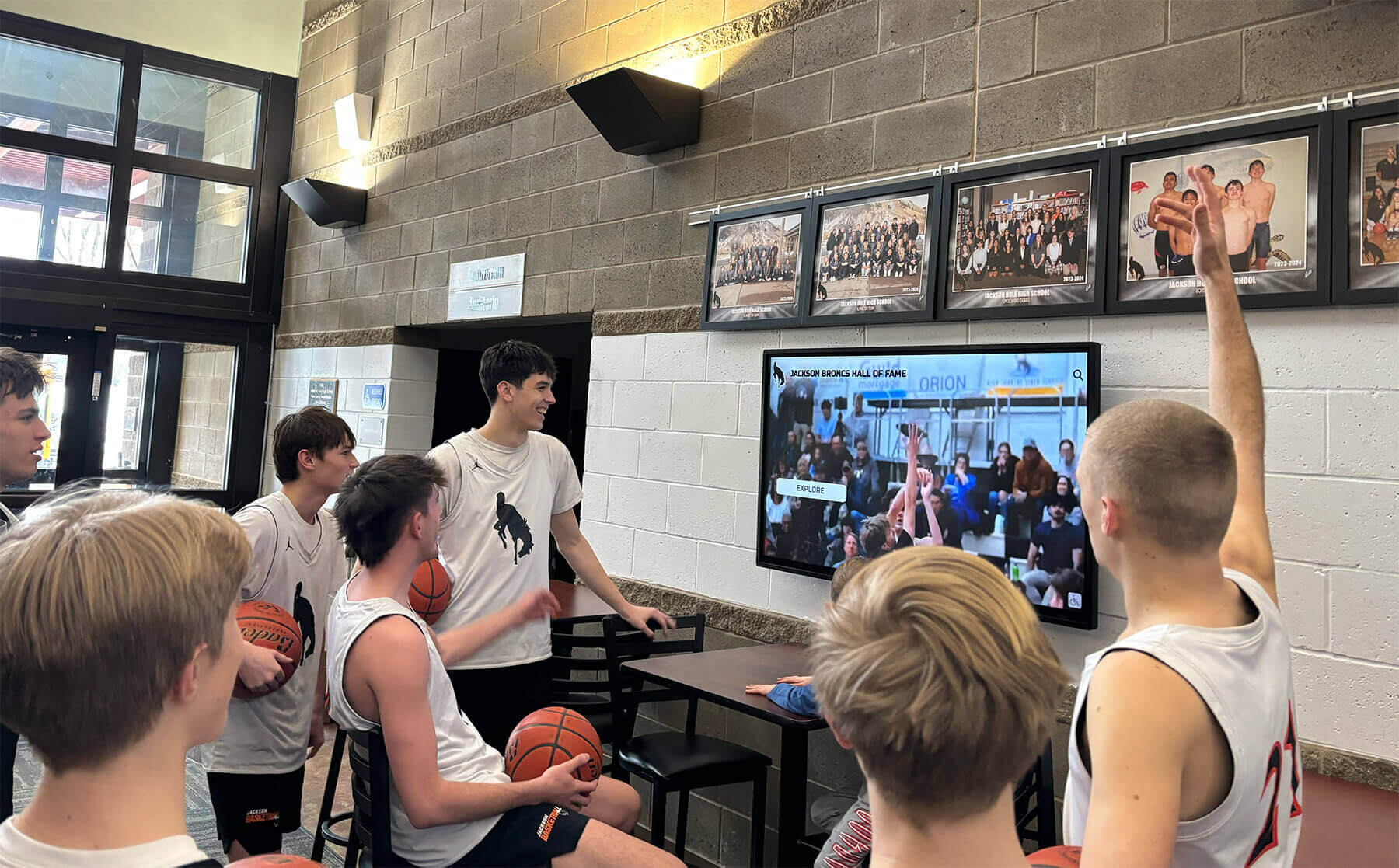
Capturing Student Attention: Today’s students grow up surrounded by interactive technology—smartphones, tablets, video games, and social media—creating expectations for engagement that passive printed displays cannot meet. Digital timelines deliver familiar touchscreen interaction patterns requiring no instruction or assistance, immediate response to user input maintaining attention and interest, rich visual content including videos and animations that capture attention effectively, and personalized exploration paths allowing discovery based on individual interests rather than predetermined linear narratives.
Research on student recognition and engagement demonstrates that interactive digital displays generate 3-5 times longer engagement periods compared to traditional static recognition, creating deeper connections between students and institutional history.
Building Institutional Pride: When students understand school history comprehensively—championship achievements, distinguished alumni, facility evolution, and tradition development—they develop stronger emotional connections to institutions and deeper pride in their schools. Digital timelines make historical discovery enjoyable rather than tedious, encouraging voluntary exploration rather than assigned research. Students discovering that their school produced notable professionals in fields matching their interests, achieved remarkable accomplishments in activities they participate in, or overcame challenges similar to those they face develop authentic pride based on genuine historical understanding rather than superficial school spirit messaging.
Connecting Past and Present: Effective digital timelines help current students recognize themselves as participants in continuing narratives rather than isolated individuals attending school temporarily. When students can explore what their school looked like when their parents or grandparents attended, discover traditions that have evolved across decades, or understand how current programs developed from modest beginnings, they gain valuable context that strengthens belonging and institutional identification.
Strengthened Alumni Engagement and Giving
Alumni represent critical stakeholders for most educational institutions, and digital history timelines serve as powerful tools for maintaining and strengthening these vital relationships.
Facilitating Alumni Reconnection: Digital school history timelines with remote web access enable alumni living anywhere worldwide to explore their school years, reminisce about specific events they experienced, discover what happened at their alma mater after graduation, and share discoveries with family members and former classmates. This convenient access keeps alumni emotionally connected to institutions regardless of geographic distance from physical campuses.
Alumni engagement strategies emphasize that convenient access to institutional history significantly increases alumni satisfaction and ongoing engagement with schools. When graduates can easily explore their graduation years during breaks at work or show their children what their school looked like decades ago, these simple interactions maintain warm feelings and positive associations that development professionals understand correlate directly with giving behavior.
Reunion Event Enhancement: Digital timeline displays create natural gathering points during alumni reunion events, sparking conversations as classmates discover forgotten moments, compare memories about specific events, explore what changed at their school since graduation, and introduce family members to their institutional history. These informal interactions around historical displays strengthen class bonds while creating memorable reunion experiences that encourage future attendance.
Supporting Development Objectives: Research demonstrates that digital recognition displays inspire alumni giving by creating emotional connections through visible acknowledgment of alumni contributions and achievements, demonstrating institutional commitment to honoring history and tradition, providing naming opportunities for display sponsorship or content dedication, and showcasing how previous generations of donors enabled current facilities and programs through historical documentation of philanthropic impact.
Improved Institutional Marketing and Recruitment
Prospective students and families evaluating school options increasingly consider institutional history and tradition as factors influencing enrollment decisions, particularly when comparing otherwise similar academic programs.
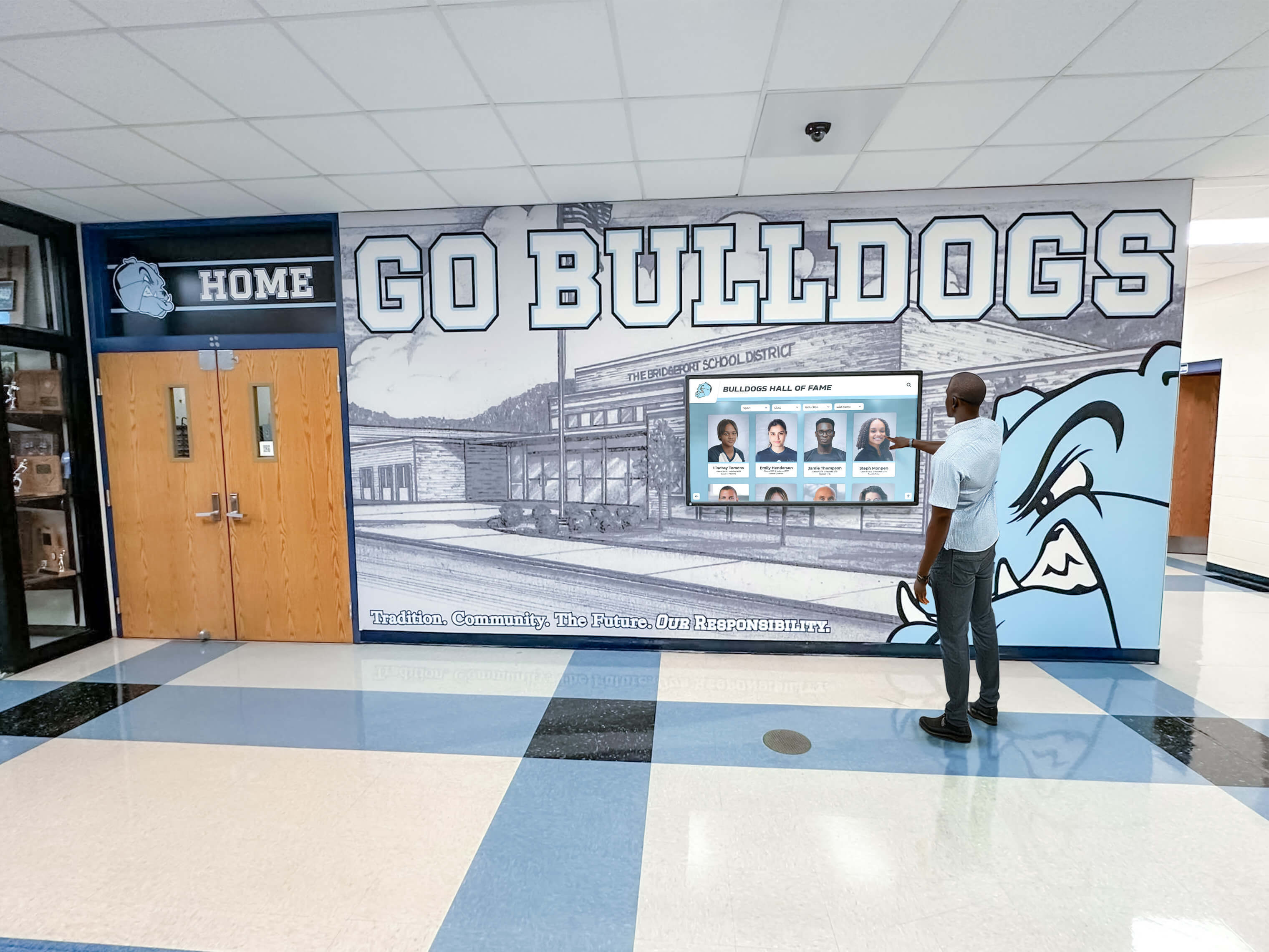
Creating Memorable Campus Visit Experiences: Campus tours represent critical opportunities to influence prospective student and family perceptions, and digital history timelines contribute significantly to positive impressions. Professional, engaging displays communicate institutional investment in heritage and tradition, demonstrate technological sophistication matching modern student expectations, provide conversation starters that tour guides can leverage strategically, and create shareable photo opportunities that extend marketing impact through social media.
Admission professionals report that prospective families frequently remember interactive displays long after tours conclude, citing them specifically when discussing campus visit experiences and making enrollment decisions.
Demonstrating Institutional Stability and Excellence: Schools with well-documented histories spanning decades or centuries communicate stability, proven quality, and sustained commitment to educational excellence. Digital timelines showcasing comprehensive institutional evolution provide tangible evidence of longevity and tradition that addresses family concerns about institutional viability and program quality, particularly for smaller or less nationally prominent schools where these questions arise more frequently.
Differentiating Institutional Identity: In competitive educational markets where multiple schools offer similar academic programs and facilities, institutional heritage and tradition can provide meaningful differentiation. Schools that effectively showcase unique histories, distinctive traditions, or notable alumni accomplishments create memorable impressions that distinguish them from competitors with less developed historical presentations.
Planning Your Digital School History Timeline
Successful digital timeline implementations begin with thoughtful planning that clarifies objectives, identifies audiences, determines scope, and establishes realistic timelines and budgets.
Defining Goals and Success Metrics
Before evaluating technologies or developing content, establish clear goals that will guide all subsequent decisions and enable objective assessment of implementation success.
Common Digital Timeline Objectives:
- Replace outdated printed timeline displays freeing hallway space
- Increase student awareness of and pride in school history
- Strengthen alumni connections through accessible heritage content
- Enhance campus tour experiences for prospective students
- Preserve deteriorating historical materials through digitization
- Create social media-worthy experiences generating organic marketing
- Demonstrate institutional heritage during accreditation or milestone celebrations
Measurable Success Indicators: Establishing concrete metrics enables objective evaluation of whether digital timeline investments achieve intended outcomes. Consider tracking touchscreen interaction frequency and average session duration, web-based timeline access volume and geographic distribution, student survey responses regarding school pride and historical awareness, alumni event attendance and engagement patterns, social media mentions and content sharing rates, campus tour feedback specifically mentioning timeline displays, and donor responses to recognition opportunities within timeline content.
Determining Content Scope and Organization
Digital timelines can encompass complete institutional histories spanning centuries or focus on specific aspects of heritage, and clarifying scope early prevents common pitfalls of attempting overly ambitious projects that never reach completion.
Comprehensive vs. Focused Approaches:
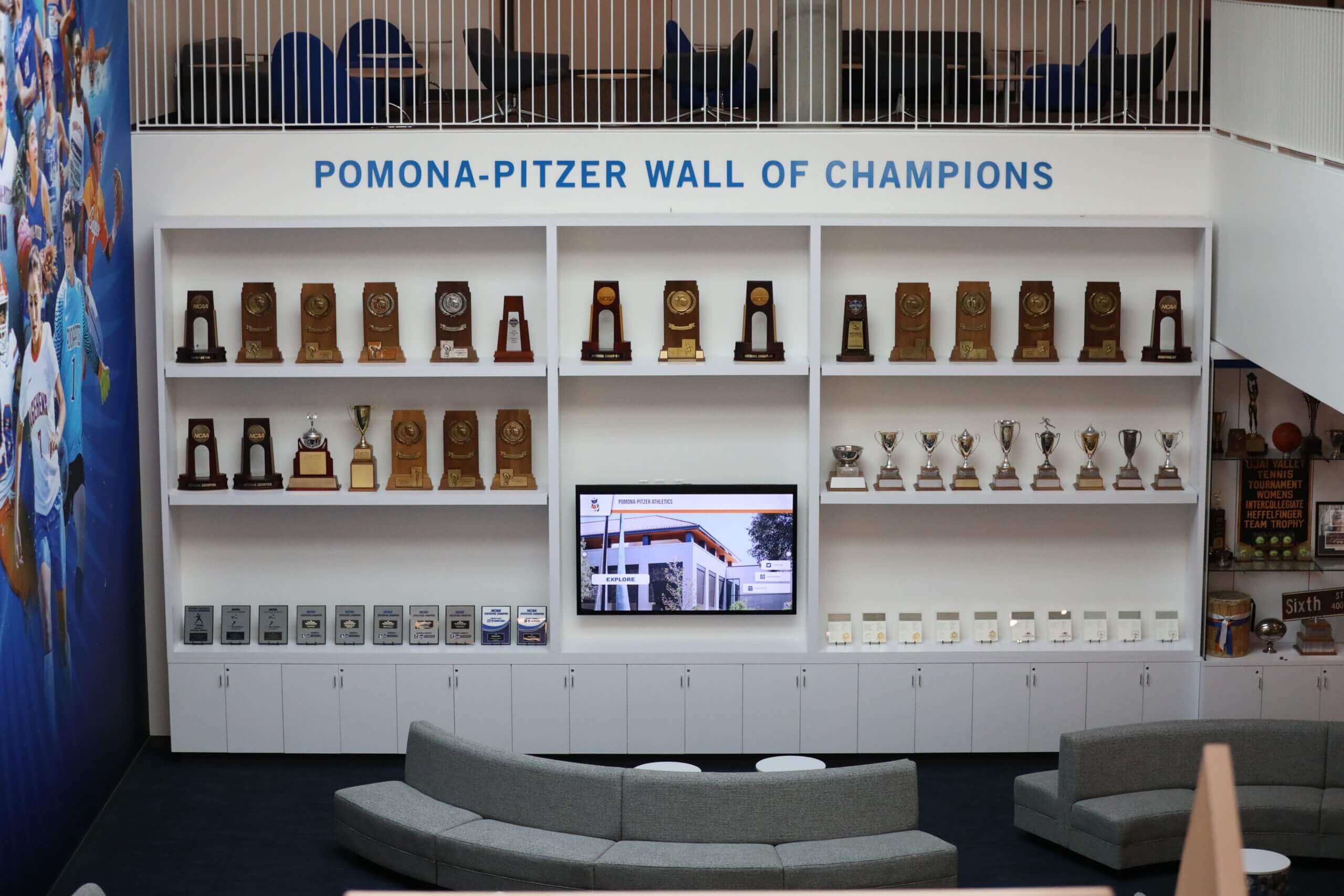
Comprehensive timelines document complete institutional evolution including founding and early development, facility construction and campus expansion, leadership succession and administrative milestones, athletic championships and competitive achievements, academic program development and educational innovations, significant student accomplishments across all domains, and community impact and external recognition. This exhaustive approach creates authoritative historical resources serving diverse audiences and multiple institutional purposes simultaneously.
Focused timelines concentrate on specific dimensions of institutional history, such as athletic program evolution documenting teams, championships, and coaching legacies; facility development showing campus architectural evolution; distinguished alumni showcasing notable graduates and their achievements; or thematic timelines exploring how schools responded to historical events, adapted to changing demographics, or developed signature programs.
Organizational Frameworks: Digital timelines support multiple organizational structures that traditional linear displays cannot accommodate. Chronological organization presenting history in strict date order works well for comprehensive institutional overviews. Thematic organization groups related events across different periods—all athletic milestones together, all facility development together—helping viewers understand specific aspect evolution. Biographical organization centers timelines around significant individuals—founders, transformational leaders, distinguished alumni—showing institutional history through personal stories. Hybrid approaches combine elements, perhaps organizing primarily chronologically but allowing thematic filtering or biographical deep-dives within the chronological structure.
Budget Considerations and Funding Strategies
Digital timeline implementations require investment in hardware, software, content development, and ongoing maintenance, and developing realistic budgets prevents common underestimation that derails projects.
Initial Implementation Costs: Comprehensive budgets account for touchscreen display hardware ($3,000-$8,000 depending on size and quality), content management software licensing ($2,000-$6,000 for purpose-built platforms), professional installation including mounting and network connectivity ($800-$2,000), historical content digitization and organization ($2,000-$10,000 depending on volume and condition), multimedia content development including video editing and audio recording ($1,000-$5,000 for professional quality), training for staff who will manage ongoing content ($500-$1,500), and contingency reserves for unexpected complications (10-15% of total budget).
Most digital timeline implementations range from $10,000-$35,000 for complete initial deployment including hardware, software, installation, and comprehensive content development.
Ongoing Annual Costs: Sustainable implementations budget for software licensing or subscription fees ($500-$2,000 annually), content expansion and updates ($500-$2,000 annually for new historical content and timeline maintenance), technical support and maintenance contracts ($300-$1,000 annually), hardware refresh planning (setting aside funds for eventual display replacement in 5-7 years), and staff time for content management (typically 2-5 hours monthly for active timeline programs).
Funding Approaches: Many schools successfully fund digital timeline projects through dedicated heritage preservation fundraising campaigns, anniversary or centennial celebration budgets, alumni class gift opportunities, facility improvement or capital campaign allocations, grant opportunities for educational technology or historical preservation, or general operating budgets recognizing strategic value of heritage recognition.
Fundraising for digital recognition projects often proves successful because heritage preservation resonates emotionally with alumni and donors who appreciate tangible, permanent projects honoring institutional history.
Creating Compelling Timeline Content
Technology enables impressive capabilities, but content quality ultimately determines whether digital school history timelines achieve their potential for engagement, education, and inspiration.
Historical Research and Content Gathering
Comprehensive timelines require systematic research gathering information about institutional history that may exist in scattered, disorganized, or fragile formats requiring careful handling.
Primary Historical Sources: Most schools possess more historical materials than initially apparent, often distributed across multiple locations in varying states of organization and accessibility. Yearbooks provide comprehensive annual documentation of students, staff, activities, and events. School newspapers and literary magazines offer student perspectives on contemporary events and priorities. Athletic programs and event materials document competitions and ceremonies. Administrative records and board minutes preserve official institutional decisions and policies. Photograph collections in various formats and storage conditions capture visual history. And oral histories from long-serving staff, distinguished alumni, and community members preserve memories and perspectives unavailable in written records.
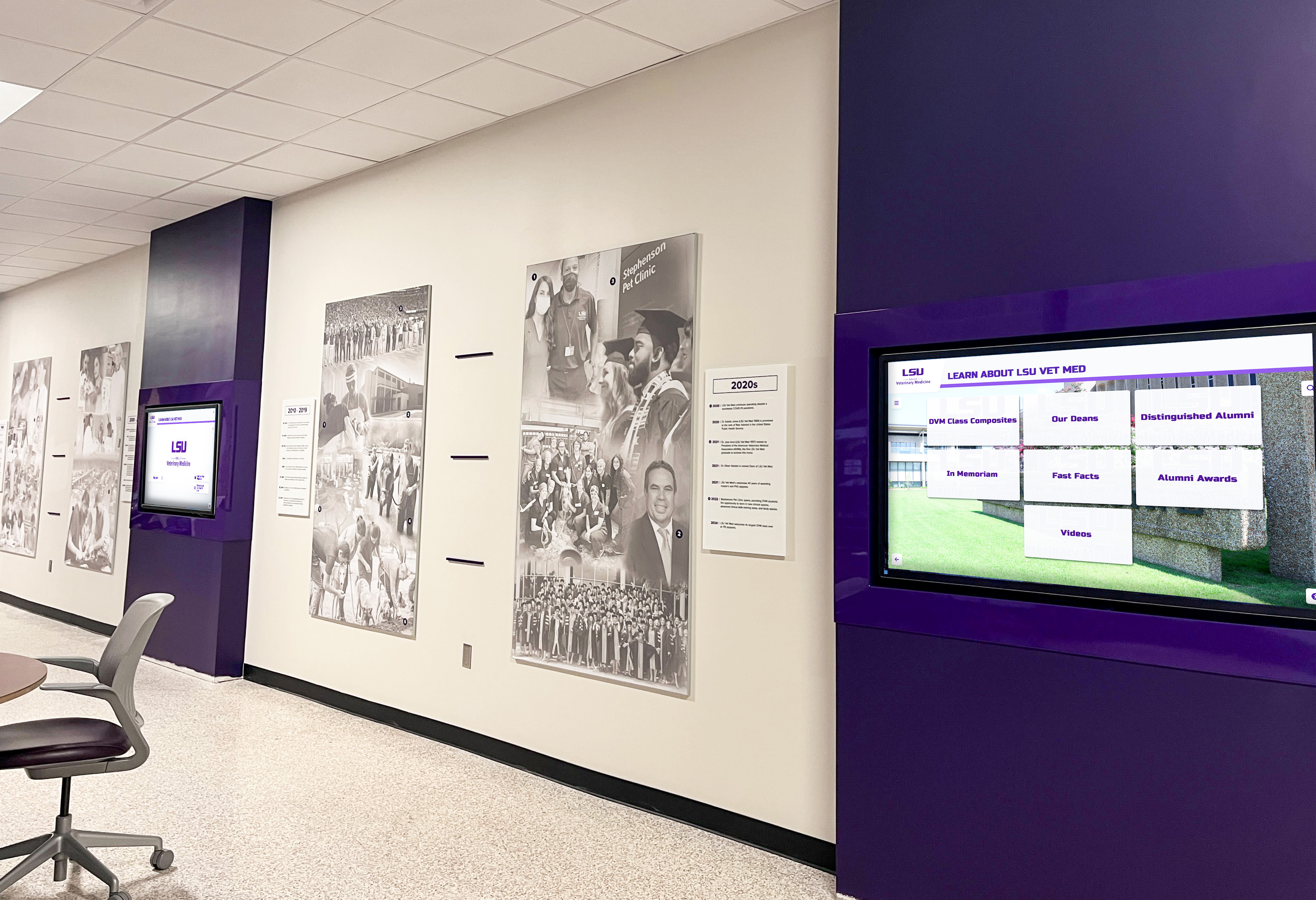
Digitization Best Practices: Converting physical historical materials to digital formats requires careful handling preserving originals while creating high-quality digital copies suitable for timeline presentation. Professional scanning services can process large volumes efficiently using appropriate equipment and standards. For institutions undertaking digitization internally, guidelines recommend scanning photographs at minimum 300 DPI resolution for print quality and 600 DPI for archival preservation, using non-proprietary file formats like JPEG or TIFF ensuring long-term accessibility, organizing files systematically with consistent naming conventions, backing up digital collections in multiple locations, and comprehensive guidance on digitizing yearbooks and archival materials provides detailed frameworks for systematic preservation projects.
Alumni Contributions and Crowdsourcing: Engaging alumni as contributors enriches timeline content while building connections through meaningful involvement. Schools can request photograph donations filling gaps in official archives, collect personal stories and memories providing context and human interest, verify historical information and correct errors in institutional records, identify individuals in unlabeled photographs, and share memorabilia or artifacts that can be documented digitally. Online submission forms, reunion event scanning stations, and social media campaigns facilitate systematic alumni contribution while demonstrating that schools value their memories and perspectives.
Multimedia Content Development
Digital timelines achieve maximum engagement through diverse content types that traditional displays cannot accommodate, and investing in quality multimedia production significantly enhances timeline value.
Professional Photography and Videography: Contemporary content creation for timelines benefits from professional quality that matches student expectations shaped by high-production media consumption. Historical content scanned from yearbooks and archives provides authentic documentation, but newly created content documenting current milestones should meet modern quality standards. Professional photographers can capture high-resolution images suitable for large display screens, employ proper composition and lighting for engaging visuals, document events comprehensively rather than taking just a few shots, and deliver properly organized files ready for timeline integration.
Video content adds powerful storytelling capabilities including compilation videos summarizing significant eras or achievements, interview footage with distinguished alumni or long-serving staff, historical footage from archival film or tape converted to digital formats, celebration events and milestone ceremonies captured for posterity, and campus evolution time-lapse presentations showing facility development. Even brief video clips of 15-30 seconds significantly enhance engagement compared to static images alone.
Audio and Oral History Integration: Audio elements provide additional storytelling dimensions including recorded interviews with significant institutional figures, historical audio from speeches, performances, or ceremonies, ambient sound recordings capturing authentic historical atmosphere, and podcast-style audio tours narrating timeline exploration. These elements accommodate diverse learning styles while providing accessibility options for visually impaired visitors.
Written Content and Historical Narratives: While multimedia elements capture attention, well-written text provides essential context, explanation, and narrative coherence that transforms scattered events into meaningful stories. Effective timeline writing provides concise event descriptions communicating significance without unnecessary detail, contextual explanation helping modern viewers understand historical circumstances, personal stories and human interest elements creating emotional connections, connections between related events across different periods, and balanced perspectives acknowledging both achievements and challenges throughout institutional history.
Organizing and Categorizing Historical Events
Raw historical information must be organized systematically to enable effective timeline navigation and discovery, and thoughtful categorization significantly enhances usability.
Event Classification Systems:
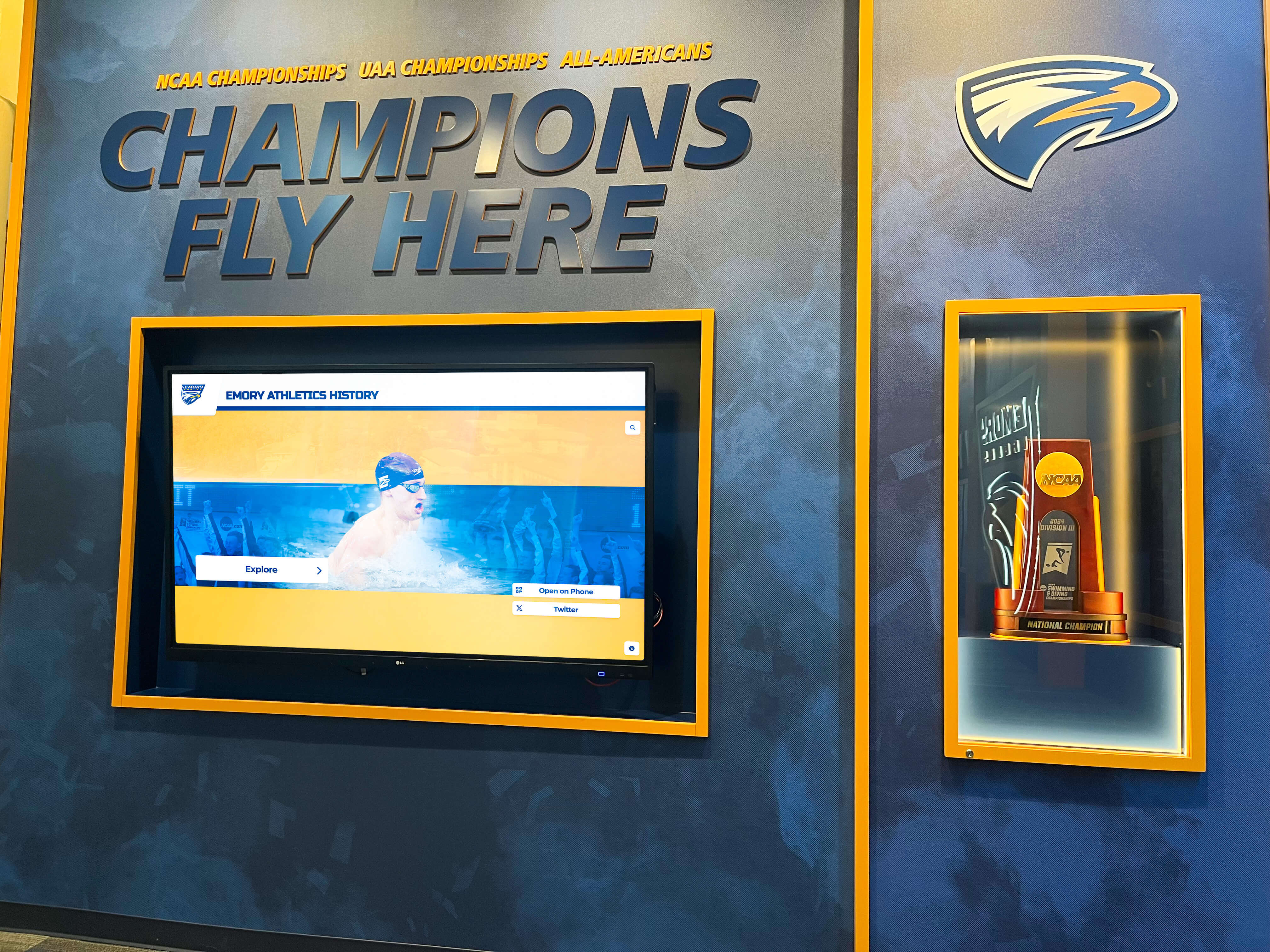
Comprehensive classification enables powerful filtering and search capabilities that help diverse audiences discover content matching their interests. Primary event categories might include founding and institutional development milestones, facility construction and campus physical evolution, leadership appointments and administrative succession, athletic championships and competitive achievements, academic program development and curricular innovations, student body demographic changes and enrollment milestones, significant community partnerships and external recognition, cultural and social history including responses to broader events, and distinguished alumni achievements occurring after graduation.
Within these primary categories, secondary tags provide additional granularity enabling precise discovery. Athletic events might be tagged by sport, level of competition, or type of achievement. Facility projects could indicate specific buildings, renovation vs. new construction, or architectural significance. Alumni accomplishments might note career fields, geographic locations, or types of achievement.
Creating Narrative Connections: The most engaging timelines transcend simple chronological lists by establishing narrative threads connecting related events across time periods. Schools might trace athletic program evolution from founding through multiple championship eras to current excellence, facility development from original buildings through expansions reflecting enrollment growth, curriculum evolution responding to changing educational philosophy and community needs, or tradition development showing how current practices emerged and evolved across decades.
These narrative connections help viewers understand institutional history as coherent story rather than disconnected facts, creating more meaningful engagement and deeper understanding of how schools developed their current identities and characteristics.
Technical Implementation and Display Options
Converting historical content and organizational plans into functional digital timeline displays requires decisions about hardware, software, placement, and technical management.
Hardware Selection for Timeline Displays
Physical display hardware serves as the interface through which users experience digital timelines, and appropriate selection significantly impacts usability, reliability, and institutional investment longevity.
Touchscreen Display Specifications: Commercial-grade displays designed for continuous operation in institutional environments provide reliability and longevity that consumer televisions lack. Key specifications include screen size appropriate for viewing distance and location (43-55 inches for closer viewing in lobbies, 55-65 inches for hallway installations with greater viewing distances), resolution of at least 1920x1080 (Full HD) with 4K (3840x2160) preferred for larger displays, brightness ratings of 350-450 nits suitable for indoor institutional lighting, capacitive touch technology providing responsive smartphone-like interaction, and commercial ratings indicating continuous operation capability and extended warranties.
Media Player and Computer Options: Touchscreen displays require computing hardware running timeline software and managing content delivery. Options include integrated displays with built-in computers eliminating separate components, standalone media players optimized for digital signage and interactive content, compact PC modules providing full computing capability in small form factors, or cloud-connected systems minimizing local processing requirements. Guidance on hardware selection for recognition displays provides detailed technical specifications and comparison frameworks.
Mounting and Installation Considerations: Professional installation ensures displays function reliably while presenting polished, finished appearance. Wall mounting provides space-efficient installation in hallways or heritage rooms, freestanding kiosks create prominent placement in lobbies or common areas without requiring wall space, recessed mounting enables elegant integration into architectural features, and custom fabricated surrounds create branded, distinctive presentations matching school identity and facility aesthetics.
Software Platform Evaluation
Content management software determines how easily staff can update timelines, how intuitively visitors can navigate content, and what capabilities displays provide for engagement and analytics.
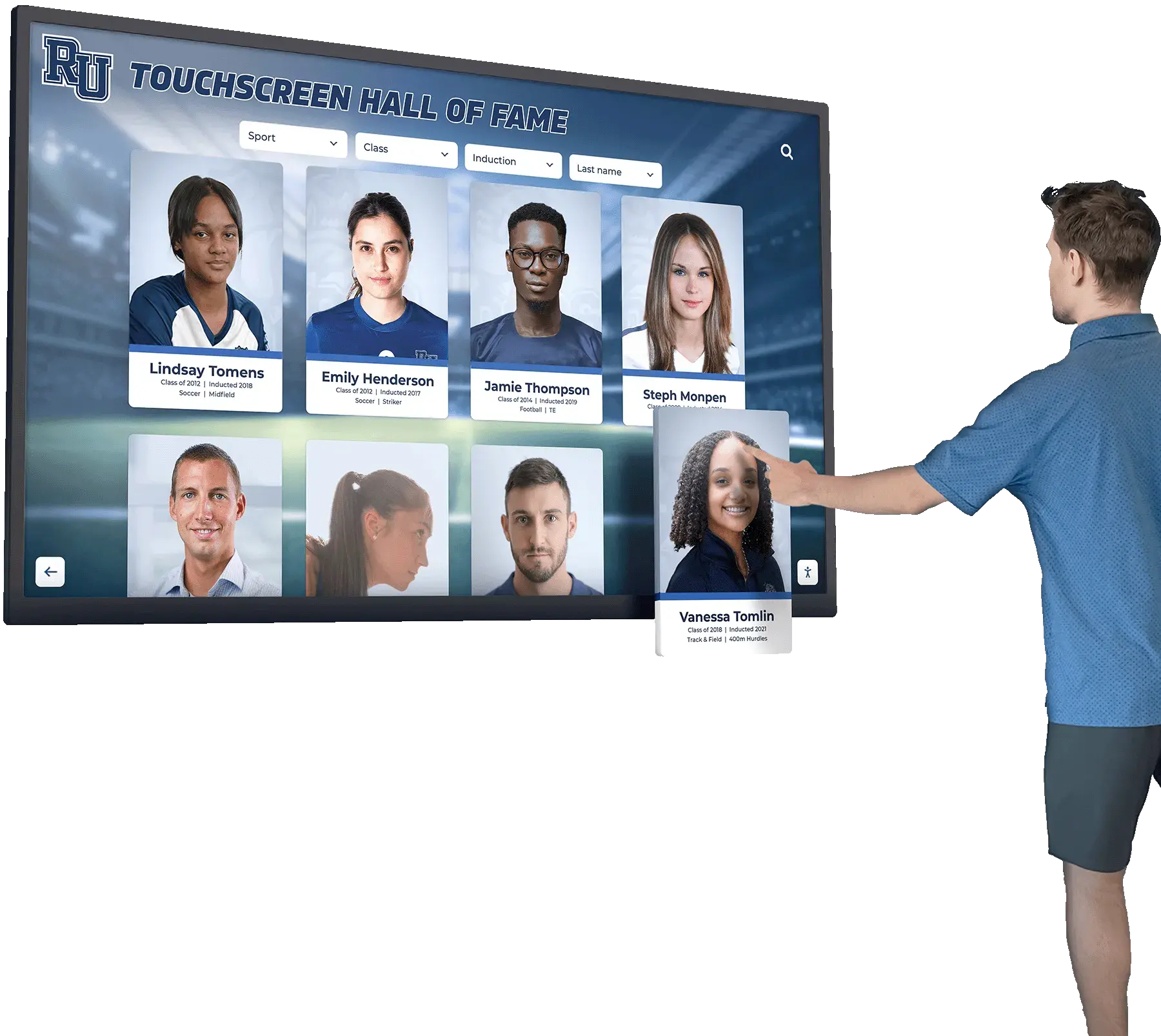
Purpose-Built vs. Generic Solutions: Purpose-built educational recognition platforms like Rocket Alumni Solutions provide features specifically designed for school timeline and heritage applications including templates optimized for chronological presentation, built-in search and filtering specific to institutional history, integration with alumni databases and school information systems, privacy controls meeting educational requirements, mobile and web access for remote alumni engagement, and educational pricing and support. Generic digital signage software or custom-developed solutions may cost less initially but typically require significant additional programming to achieve comparable functionality, lack ongoing feature development specific to educational needs, and provide limited or no support for unique school heritage applications.
Essential Software Capabilities: Evaluate timeline software platforms against core requirements including intuitive content management requiring no coding or technical expertise, chronological organization with flexible categorization options, powerful search functionality with filtering by date, category, or keyword, multimedia support for photos, videos, and audio content, responsive design working across different screen sizes and orientations, cloud-based access enabling remote content management, role-based permissions controlling who can edit different content types, analytics revealing usage patterns and popular content, and reliable vendor support providing assistance when questions arise.
Integration Possibilities: The most powerful implementations integrate timeline displays with broader institutional systems including alumni databases providing updated information about graduates featured in historical content, student information systems enabling automatic addition of current achievements to timelines, yearbook software allowing direct content import, school websites providing web-based timeline access for remote audiences, social media enabling content sharing extending timeline reach, and development databases connecting timeline recognition to donor stewardship.
Display Placement and Environmental Design
Even the most impressive timeline content and technology delivers limited impact if displays are poorly located or presented in ways that discourage interaction.
Optimal Location Selection: High-traffic locations ensure maximum exposure and interaction including main entrance lobbies where all visitors pass through, cafeterias and common areas where students gather socially, athletic facilities showcasing sports history to athletes and fans, administrative buildings where alumni visit for various purposes, library or media center areas where students conduct research, and dedicated heritage rooms or halls of fame providing focused historical presentation.
Consider not just foot traffic volume but also dwell time and interaction appropriateness. Locations where people naturally pause or wait—building entrances during arrival and dismissal, cafeteria lines, athletic facility lobbies before events—provide better interaction opportunities than high-speed corridors where people rush past without stopping.
Creating Distinguished Heritage Spaces: The most impactful timeline installations create dedicated environments rather than simply adding displays to existing multipurpose areas. Distinguished heritage spaces might include comprehensive historical galleries with multiple timeline displays and artifact cases, donor recognition areas honoring philanthropic supporters alongside institutional history they enabled, hall of fame corridors documenting distinguished alumni and achievements, or interactive learning centers where students can explore institutional heritage as educational resource. Physical space investment demonstrates institutional seriousness about heritage preservation while creating memorable experiences that simple hallway displays cannot match.
Lighting and Visibility Optimization: Proper lighting proves critical for display visibility and user experience. Adequate ambient lighting enables comfortable viewing without screen glare, accent lighting draws attention to timeline displays distinguishing them from surroundings, natural light control prevents windows from causing screen glare during certain times of day, and appropriate screen brightness settings balance visibility with energy efficiency and display longevity.
Maintaining and Expanding Timeline Content
Digital school history timelines require ongoing attention remaining current, accurate, and engaging across years and leadership transitions, and establishing sustainable processes prevents timelines from becoming outdated through neglect.
Establishing Update Workflows
Clear procedures and assigned responsibilities ensure new milestones are added systematically rather than sporadically or forgotten entirely.
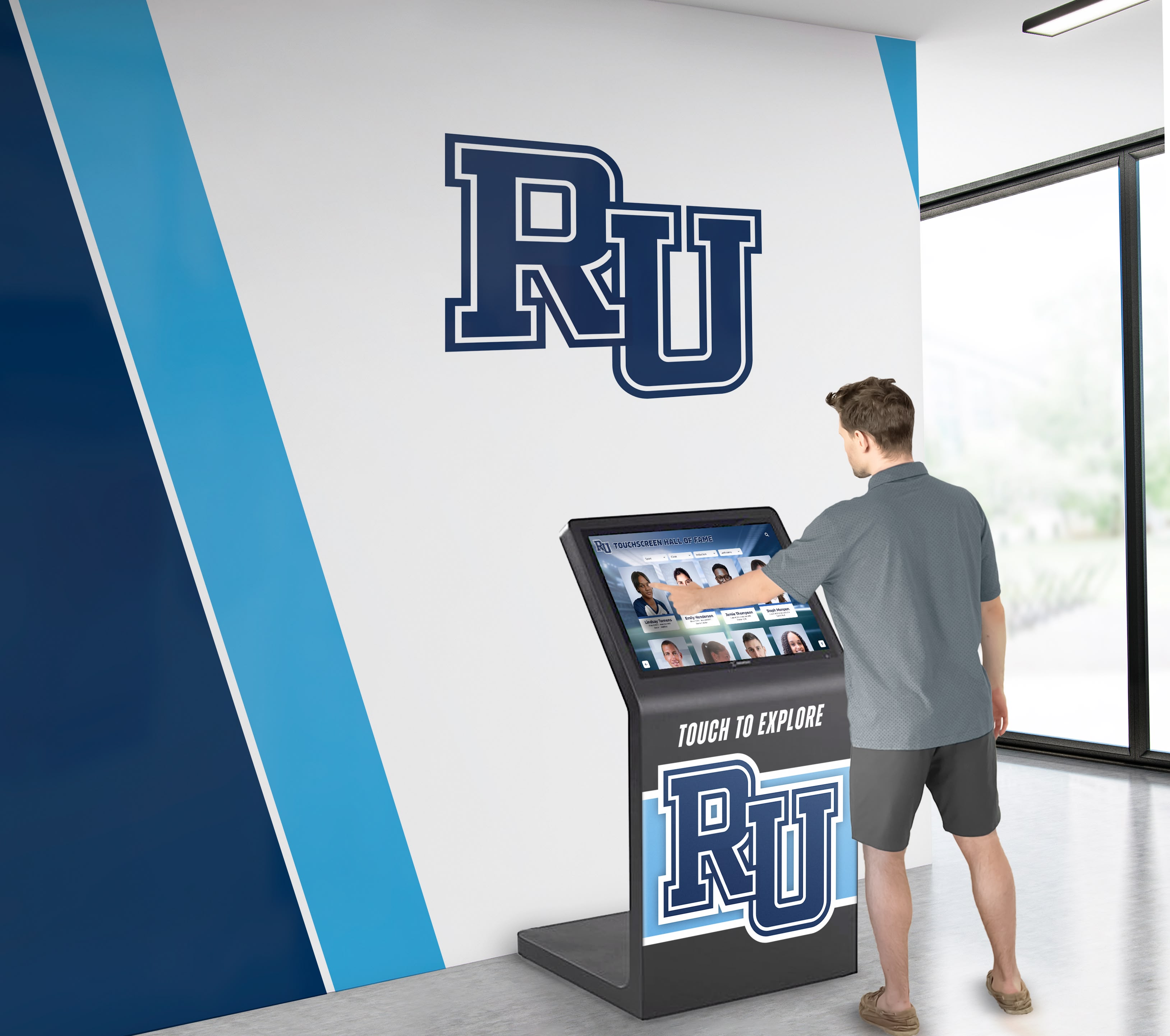
Regular Update Cycles: Effective programs establish systematic update schedules tied to school calendar rhythms including end-of-year achievement documentation capturing annual milestones before summer, beginning-of-year updates ensuring timelines feature current content as school begins, seasonal rotations highlighting sports or activities currently in season, milestone celebration updates marking anniversaries or special events, and continuous recognition adding new content whenever significant achievements occur rather than waiting for scheduled updates.
Role Assignments and Accountability: Sustainable management requires clear role definition establishing who handles different timeline responsibilities. Athletic directors or coaches might provide sports-related historical content and current achievements, development staff could manage distinguished alumni recognition and donor acknowledgment, librarians or archivists may oversee historical research and digitization projects, communications staff might handle photography and multimedia content creation, technology coordinators could manage technical maintenance and platform administration, and designated timeline coordinators provide overall program oversight ensuring coherent implementation across departments.
Written role documentation prevents assumptions that “someone else” handles updates—situations that commonly result in timelines becoming outdated when everyone assumes another person manages maintenance.
Content Expansion Strategies
Initial timeline implementations typically focus on recent decades or highest-priority content, with systematic expansion over subsequent years building increasingly comprehensive historical coverage.
Phased Historical Backfilling: Rather than attempting complete historical documentation before launch, many successful implementations adopt phased approaches beginning with thoroughly documented recent decades (last 10-20 years) where materials are readily available and memories remain fresh, expanding systematically into earlier periods as time and resources permit, prioritizing significant milestones and achievements filling critical historical gaps, engaging alumni from specific eras for targeted content development about their periods, and accepting that comprehensive documentation may take 3-5 years while launching with valuable partial coverage generates immediate engagement.
Thematic Deep-Dive Projects: Beyond chronological expansion, periodic focused projects can develop rich content about specific historical dimensions including comprehensive athletic program histories documenting complete competitive evolution, facility evolution documentation showing campus physical development through photographs and plans, distinguished alumni profile series highlighting notable graduates with detailed biographical content, tradition origin research exploring how current practices emerged and evolved, or community impact documentation showing institutional contributions to broader community development.
These thematic projects create engaging content clusters that attract particular audience segments while building timeline depth and richness beyond simple chronological coverage.
Analytics and Impact Assessment
Understanding how audiences engage with timeline displays reveals what content resonates most effectively while demonstrating program value to stakeholders and informing continuous improvement.
Usage Metrics and Patterns: Modern timeline platforms provide analytics revealing which content receives most interaction, peak usage times and seasonal patterns, average session duration indicating engagement depth, search terms showing what people seek in timelines, navigation paths revealing how users explore content, and return visitor rates demonstrating sustained interest. These metrics help timeline managers understand what works, identify gaps or underperforming content, optimize featured content selections, and demonstrate program value to administrators and stakeholders.
Qualitative Feedback Mechanisms: Quantitative metrics tell important parts of stories, but qualitative feedback reveals experiential dimensions that numbers miss including on-screen feedback forms collecting user impressions and suggestions, informal conversations during events revealing how people use timelines, social media monitoring showing what content people share and discuss, alumni testimonials describing reconnection experiences, student focus groups exploring timeline effectiveness for learning, and campus tour feedback indicating prospective family responses. This qualitative input informs content development priorities while providing compelling testimonials demonstrating program impact for stakeholders.
Special Timeline Applications and Use Cases
Beyond general institutional history presentation, digital timeline technology supports specialized applications serving specific educational purposes or stakeholder needs.
Anniversary and Milestone Celebrations
Significant anniversaries provide ideal opportunities for enhanced timeline implementations that comprehensively document institutional history while celebrating milestone achievements.
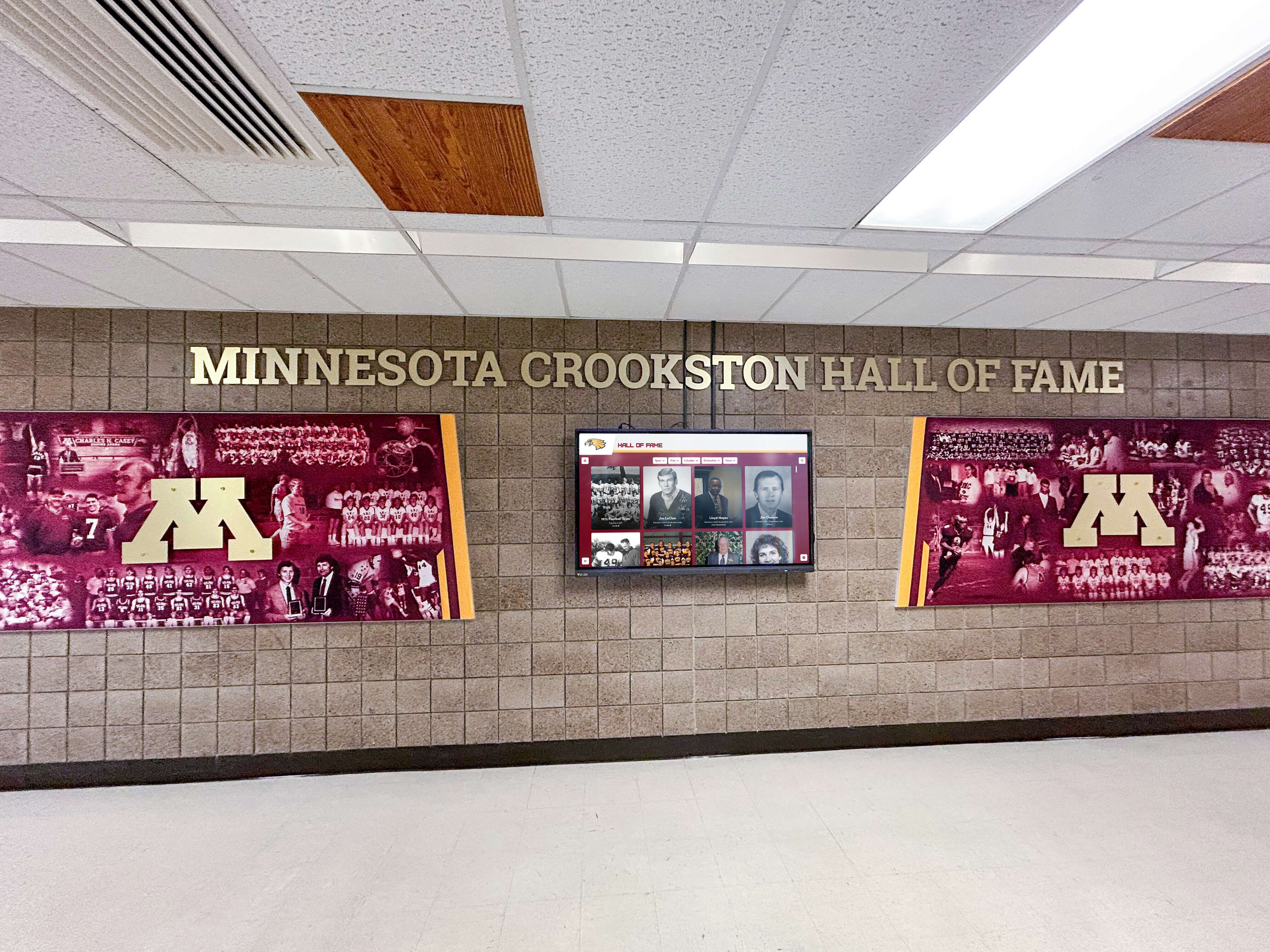
Centennial and Major Anniversary Timelines: Schools approaching centennials or other major anniversaries often develop comprehensive timeline projects as core elements of celebration programming. These special timelines might feature decade-by-decade retrospectives highlighting era defining characteristics, comparative then-and-now content showing institutional evolution, milestone collections documenting significant firsts and breakthroughs, leadership retrospectives honoring administrative succession and institutional builders, and legacy recognition celebrating multi-generational family connections to institutions. Many anniversary timeline projects receive dedicated fundraising support and remain as permanent heritage installations long after celebrations conclude.
Facility Dedication Timelines: New building openings or major renovation completions provide opportunities for focused timelines documenting facility evolution, construction processes, significant spaces and their purposes, naming stories honoring donors or distinguished figures, and programmatic impact showing how facilities enable educational missions. These specialized timelines create context helping occupants appreciate spaces they use while honoring those whose generosity or vision made facilities possible.
Athletic Heritage and Championship Documentation
Sports history generates particular passion and interest among students, alumni, and communities, making athletic timelines especially valuable for engagement and pride-building.
Comprehensive Athletic Program Timelines: Digital recognition platforms enable systematic documentation of complete athletic history including championship seasons across all sports with detailed team rosters, coaching succession showing program leadership evolution, record progression tracking how performance standards improved across decades, conference championship documentation celebrating competitive excellence, individual athlete achievements recognizing distinguished performers, rivalry history preserving memorable competition traditions, and facility evolution showing how athletic spaces developed supporting program growth.
Sport-Specific Deep Dives: Some schools develop detailed timelines focusing on particular sports with rich histories or significant achievement including college football program evolution for schools with notable gridiron traditions, basketball program documentation celebrating court excellence, baseball program heritage preserving diamond achievements, or Olympic sport recognition honoring athletes competing at highest levels. These focused timelines provide depth that comprehensive athletic overviews cannot accommodate while serving particularly passionate fan and alumni communities.
Academic Excellence and Scholarly Achievement
Balancing athletic recognition with academic achievement documentation demonstrates institutional values while honoring intellectual accomplishments deserving equal prominence.
Academic Program Development Timelines: Documenting curricular evolution and program innovation helps stakeholders understand how educational offerings developed meeting changing community needs and educational philosophy including new program launches responding to career field evolution, curriculum redesigns reflecting pedagogical advancement, innovative teaching methodologies pioneering educational approaches, accreditation achievements demonstrating program quality, research initiatives advancing knowledge in specific fields, and partnerships with higher education or business communities creating educational opportunities. These academic timelines demonstrate institutional educational mission centrality beyond athletics or facilities.
Scholar and Achievement Recognition: Individual academic excellence timelines might document valedictorian succession honoring top scholars across generations, National Merit Scholars and other distinction recipients, academic competition champions representing schools successfully, scholarship recipients achieving external recognition, research accomplishments by students or faculty advancing knowledge, and distinguished educator recognition celebrating teaching excellence. This comprehensive academic recognition creates balance ensuring athletics doesn’t dominate institutional heritage presentation.
Future Trends in Digital School History Timelines
Timeline technology continues evolving, and understanding emerging capabilities helps institutions plan implementations remaining relevant and effective for years ahead.
Artificial Intelligence and Automated Content Organization
AI technologies are beginning to transform how schools develop and organize historical content, reducing administrative burden while enabling discovery patterns impossible with manual curation.
Automated Content Tagging and Organization: Advanced platforms are incorporating AI-powered features including automatic date extraction from photographs and documents, facial recognition identifying individuals across multiple images without manual tagging, location detection placing events geographically for map-based exploration, similar content suggestions connecting related historical moments automatically, and duplicate detection preventing redundant content in large archives. These capabilities dramatically reduce time required for comprehensive historical digitization while improving content discoverability.
Smart Historical Research Assistants: Emerging AI applications may help schools conduct historical research by analyzing digitized yearbooks extracting names, activities, and achievements automatically, processing newspaper archives identifying relevant articles mentioning schools, transcribing audio interviews converting oral histories to searchable text, generating initial content drafts that human editors refine and verify, and identifying historical gaps suggesting what content libraries need for comprehensive coverage. These tools accelerate timeline development while maintaining human oversight ensuring accuracy and appropriate interpretation.
Augmented and Virtual Reality Applications
Immersive technologies create new possibilities for experiencing school history beyond traditional screen-based timelines.
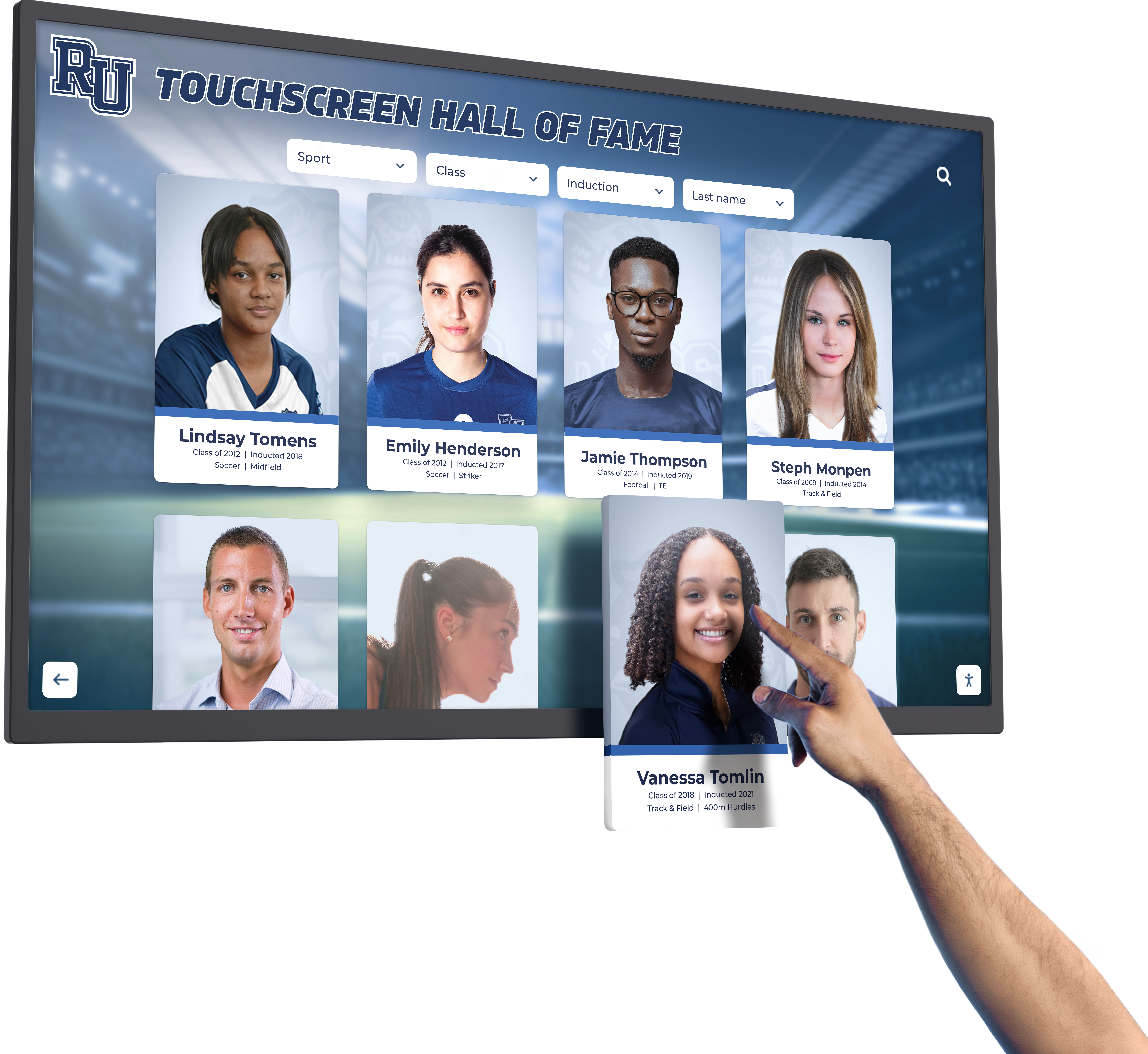
AR-Enhanced Physical Spaces: Augmented reality applications enable mobile devices to overlay historical information onto current physical spaces including pointing phones at current buildings revealing historical appearances and construction progression, scanning hallways displaying historical photographs in their original locations, exploring campuses with AR guides narrating institutional evolution, and attending events with AR enhancements providing historical context about spaces and traditions. These applications extend timeline content throughout physical campuses rather than confining heritage to specific display locations.
Virtual Heritage Tours: Virtual reality experiences enable remote audiences to explore institutional history immersively including virtual campus tours showing historical facility evolution across eras, 360-degree historical recreations placing viewers in significant past moments, virtual museum exhibitions curating artifacts and historical materials thematically, and interactive historical experiences where users make decisions exploring how choices shaped institutional development. These applications particularly benefit geographically distant alumni unable to visit campuses physically while providing innovative educational experiences for current students.
Social and Collaborative Timeline Development
Future timeline platforms may increasingly emphasize community participation and social interaction around historical content.
Crowdsourced Content Contributions: Platforms might enable broader community participation in timeline development including alumni direct content submission with moderation workflows, community photo tagging helping identify unlabeled individuals, collaborative memory collection where multiple people contribute perspectives on events, historical verification systems allowing community fact-checking and correction, and gamification elements rewarding meaningful contributions building engagement and participation.
Social Interaction Features: Timeline platforms could incorporate social networking elements including commenting on historical entries sharing personal memories and perspectives, tagging classmates in historical photographs alerting them to recognition, sharing favorite content to social media platforms, creating personal collections bookmarking interesting historical moments, and connecting with other people interested in specific historical periods or topics. These social features transform timelines from one-way information presentation to community conversation spaces around shared heritage.
Conclusion: Bringing School History to Life
Digital school history timelines represent transformative tools for heritage preservation, student engagement, and community connection that address the limitations of traditional static displays while creating new possibilities for storytelling, interaction, and pride-building. By combining unlimited digital capacity with intuitive touchscreen interfaces, rich multimedia content, and powerful search and discovery tools, modern timeline platforms ensure that no achievement goes unrecognized, no era remains inaccessible, and no story fades from institutional memory simply because physical space ran out or printed displays deteriorated.
The most successful digital timeline implementations begin with clear strategic goals, prioritize content quality and authentic storytelling, select appropriate technology serving institutional needs and budgets, and establish sustainable management processes ensuring timelines remain current and relevant across leadership transitions. Whether documenting comprehensive institutional history spanning centuries, focusing on specific dimensions like athletics or academic excellence, or creating specialized timelines for anniversary celebrations or facility dedications, the fundamental principles remain consistent: preserve heritage thoughtfully, present it engagingly, and maintain it systematically.
Schools that invest in digital history timelines create lasting value extending far beyond heritage preservation, including strengthened student pride and institutional identification, deepened alumni connections supporting engagement and philanthropy, enhanced recruitment and marketing differentiating institutions, preserved institutional memory surviving leadership transitions, and demonstrated commitment to honoring every contribution and achievement regardless of when it occurred. These strategic benefits justify timeline investments as core institutional initiatives rather than optional enhancements.
Ready to transform how your school preserves and celebrates its history? Rocket Alumni Solutions provides purpose-built digital timeline and recognition platforms specifically designed for educational institutions, combining powerful capabilities with intuitive management that makes sophisticated heritage preservation accessible to schools of all sizes. From comprehensive historical documentation to focused anniversary timelines, from athletic achievement recognition to academic excellence celebration, digital school history timelines bring your institution’s story to life in ways that inspire current students, connect alumni, and preserve legacy for generations to come.
Your school’s history deserves more than fading photographs in forgotten corridors. Give it the dynamic, engaging, accessible presentation it deserves through digital timelines that honor the past while inspiring the future.



































